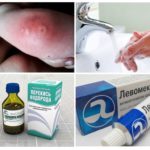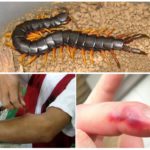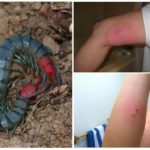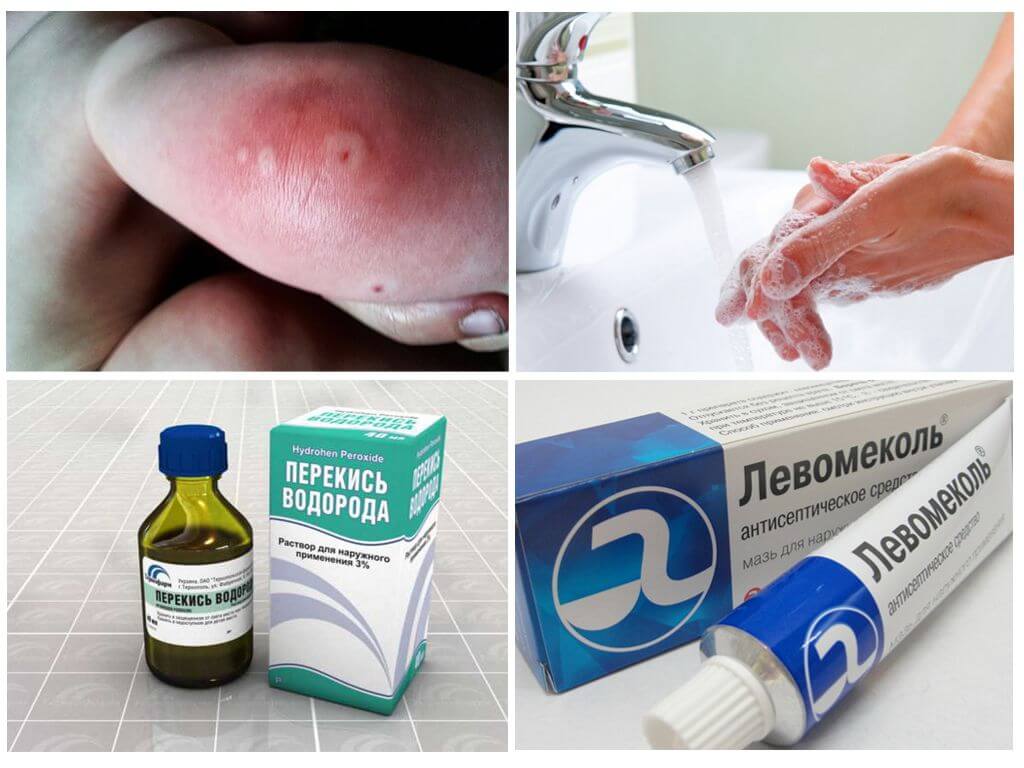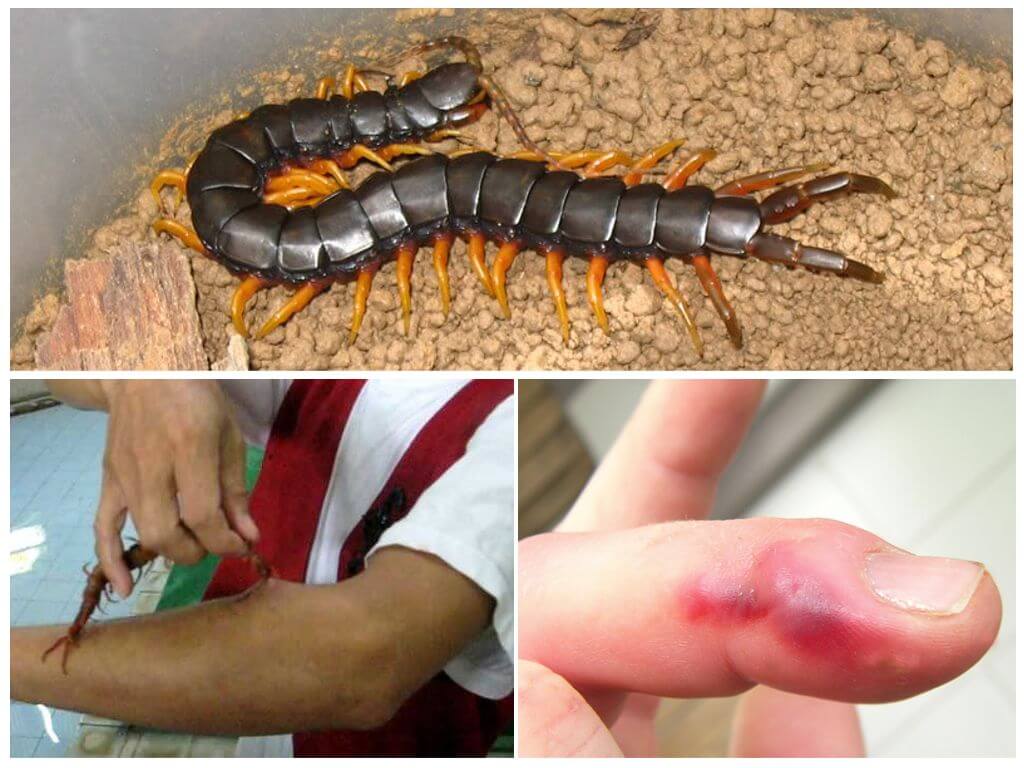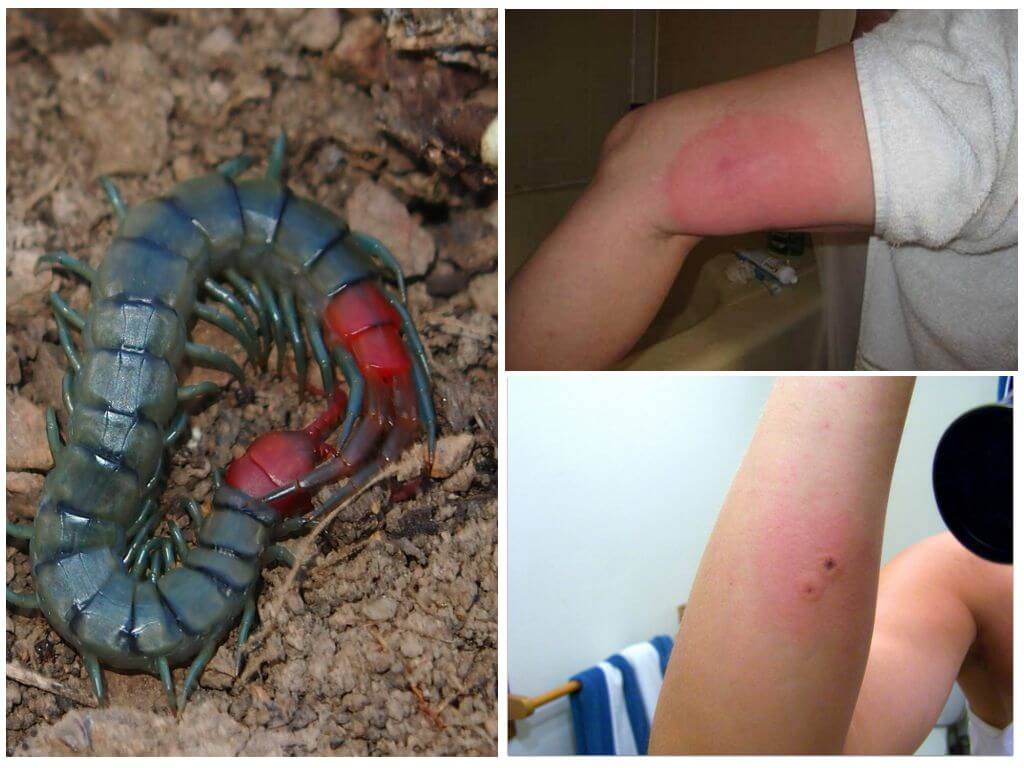What to do if bitten by skolopendra
- First aid for bite
- Danger of Scolopendra Bite
- A bite of an insect
With scolopendra - a bright representative of the genus of foot-legged centipedes very often people encounter during a hike, usually forgetting about the danger. Many, when meeting this very amazing creature, are not only disgusted, but also frightened. And it's not for nothing, because a bite of skolopendry can not only spoil the rest, but also cause very unpleasant painful sensations.Moreover, suppurations and even anaphylactic shock can become a consequence of a predator attack. What to do if bitten by skolopendra, you need to know to all fans of outdoor activities.
Description
Scolopendra, which looks like a caterpillar, is the owner of a hard shell and a large number of clawed legs located along the whole body. The predator, whose maximum body length can reach 26 cm, hunts bugs, various invertebrates, as well as birds, lizards and rodents.
On a note!
The bite of scolopendra is her main weapon, thanks to which she not only hunts for victims, but also is able to protect herself. She is not afraid of people, attacking a person in moments of danger.
Giving help
Beware, being in nature, should Crimean skolopendra. It attacks the tourists or campers who have stopped for the night in the woods or on the beach. You can get a centipede bite at home, living in an insufficiently isolated apartment. Due to the fact that skolopendra is nocturnal, it is not always possible for a person to feel the bite of a person sleeping at home. First aid for scolopendra bites consists of the following procedures:
- damaged bite site is washed with water using antibacterial (laundry) soap;
- Since various bacteria and decaying particles may be present on the extremities of scolopendra, it is necessary to know how to treat the bite, usually to disinfect the wound using an antiseptic: hydrogen peroxide or medical alcohol;
- Levomicol ointment will help to avoid tissue suppuration;
- to protect the infected skin from infection by using a sterile dressing;
- appeared puffiness is removed with a cold compress or ice;
- pain relief can be reduced by means of painkillers (Ketanov or Ibuprofen), also take an analgesic;
- toxins from the body are removed by taking large amounts of clean water;
- if the child was injured, as well as a person suffering from allergies or having a pathology of the cardiovascular system, then it is mandatory to consult a doctor;
- You should also seek medical help if after a bite a person feels unwell and his temperature rises, and there is also severe swelling.
Do not panic, if you bit a scolopendra in the Crimea. The effects of the bite, which are expressed in the form of burning and swelling, will pass within 1-2 days.
First aid for scolopendra bites in nature is similar. It is enough to wash the wound with soap and water, then treat the bite with hydrogen peroxide or alcohol tincture. Next, you should apply a sterile dressing and drink an anesthetic. In the event of a deterioration of the victim's condition, it is necessary to take measures to transport him to a medical facility, where he will be prescribed a drug from the analgesic group and will be prevented from tetanus.
Important!
To the rapid absorption of poison by the body, alcohol contributes to the acceleration of blood movement. Therefore, its adoption in such situations is unacceptable. You can not also impose a tourniquet above or below the bite. This can lead to tissue necrosis and the development of a gangrenous phenomenon. It is also not recommended to cauterize the damaged area and incise the skin to remove poison.
Types of bite
The types of scolopendra bites depend on the size of the individual itself. Large centipedes can make a very visible wound.Smaller individuals can not bite through the skin of a person. They inflict wounds by means of a pair of clawed modified limbs, which are located in the area nearest to the head. Claws and legs serve as centipedes as syringes for injecting poison into the victim's body.
On a note!
At the time of the bite, there is a strong burning sensation, as the scolopendra bites like an wasp, which can sting a person for several times.
Signs of a bite
Evidence of what a skolopendra bite looks like may be the following symptoms:
- the impact of the claws of the modified legs leaves a pair of stab wounds, around which redness and swelling occur;
- blisters, unbearable itching and pain appear on the injury site;
- in rare cases, numbness of the inflamed area is possible.
Photo bite skolopendry presented below.
The effects of a scolopendra bite on a person can be expressed in the occurrence of headache, nausea, rapid heartbeat, an increase in the lymph glands, difficulty breathing and an increase in pressure. In addition, there may be small puncture wounds on the body, indicating the trajectory of the insect.
In quite rare cases, a bite complication may be accompanied by the occurrence of a secondary infection, necrosis, and even muscle breakdown. Some people even had coronary vasospasm and acute myocardial infarction.
How to avoid insect attacks
Like most poisonous insects that inhabit the Crimea peninsula, the representative of the centipedes does not attack the person first. She attacks her victim only in the case of self-defense. Despite the toxicity, the insect venom is not dangerous to human life. However, it can cause serious consequences that will cloud recreation in nature. To avoid such problems, the following tips should be followed:
- The tent before bedtime should be carefully checked for the presence of "foreign guests" in it, and then tightly closed.
- Morning inspection of all things, shoes and clothes will help identify the hidden individual.
- Caution should also be exercised when collecting firewood for a fire, as there may be shelters for multi-legged predators under the branches.
- Not the best option to provoke a centipede and even more so to take her hands. Having a curiosity to watch skolopendra, it is best to do it from the side.This advice should also be listened to lovers of garden work during the collection of garbage or digging the soil.
Biting Crimean skolopendra hurt enough, but not fatal. What can not be said about the bite of a giant centipede, the poison of which is very toxic. For this reason, this type of scolopendr is included in the list of especially dangerous creatures on earth. However, you should not worry much about this, such individuals live in Jamaica, in Africa, Australia and South America.

